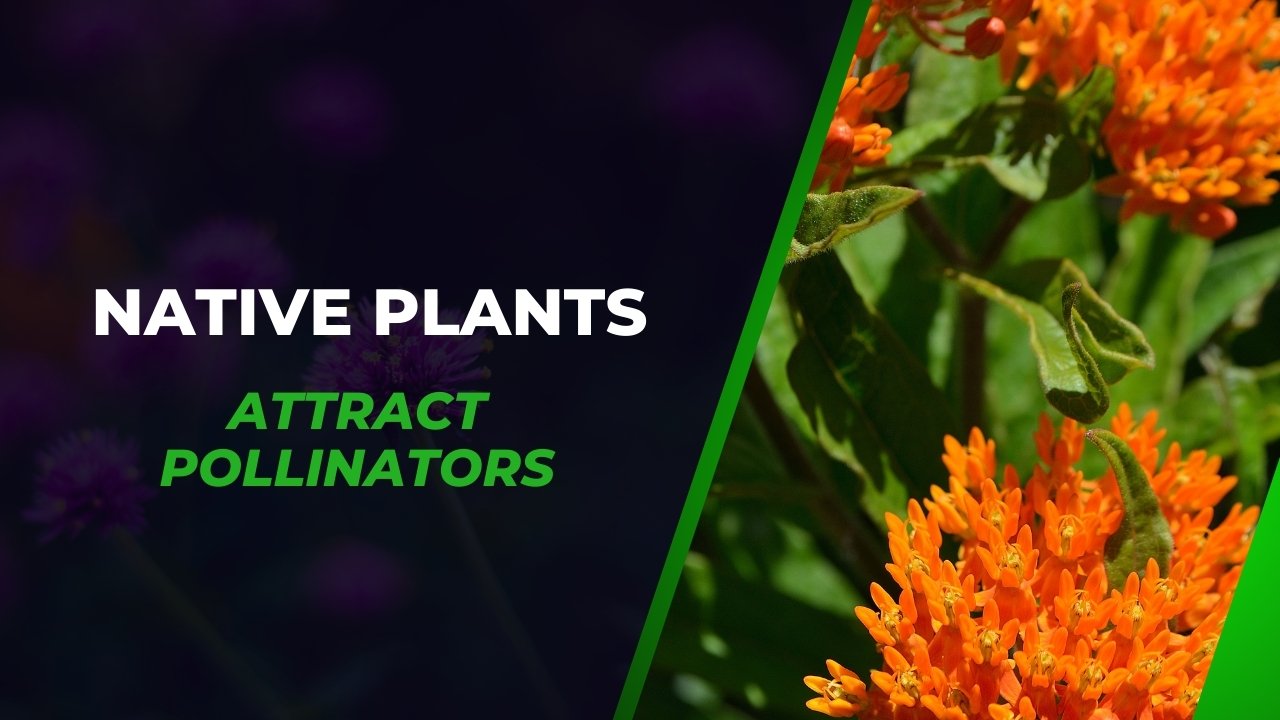Pollinators are the unsung heroes of our ecosystems, and they need our support more than ever. Transforming your garden into a pollinator paradise not only enhances its beauty but also plays a vital role in sustaining these essential creatures. Let’s explore the 15 best native plants that will attract pollinators to your backyard!
15 Best Native Plants to Attract Pollinators
1. Milkweed (Asclepias spp.)
The Monarch Magnet
If you admire the beauty of monarch butterflies, planting milkweed is essential. This native plant is the sole host for monarch caterpillars. With recent declines in monarch populations, adding milkweed to gardens can make a significant difference.
Growing Tips:
- Sunlight: Full sun
- Soil: Well-drained
- Water: Moderate
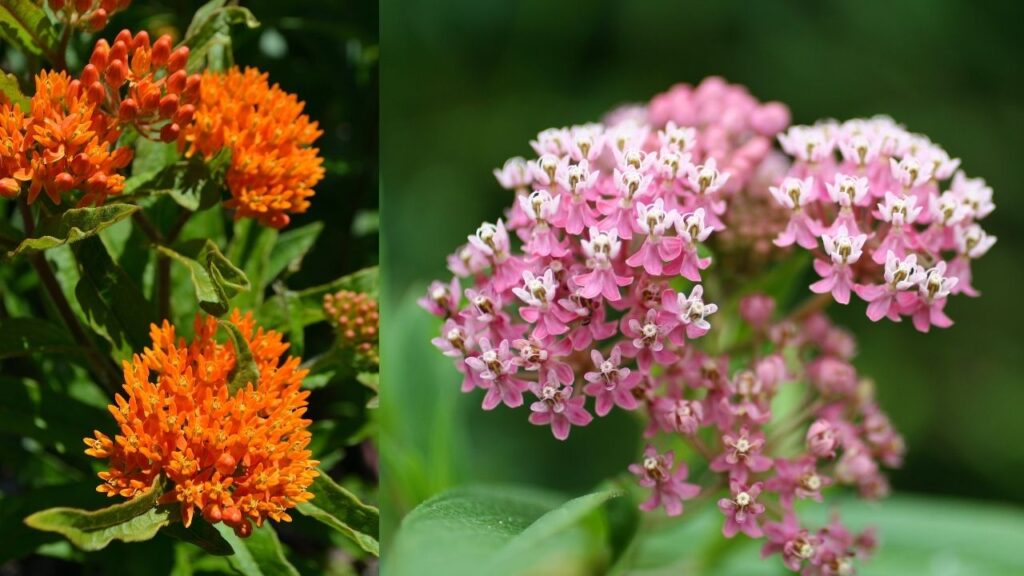
2. Purple Coneflower (Echinacea purpurea)
Pollinator Powerhouse
Purple coneflowers are not only stunning but also a favorite among bees and butterflies. Their seeds attract birds in the fall, adding more life to your garden.
Growing Tips:
- Sunlight: Full sun to partial shade
- Soil: Tolerant of poor soil
- Water: Drought-resistant once established
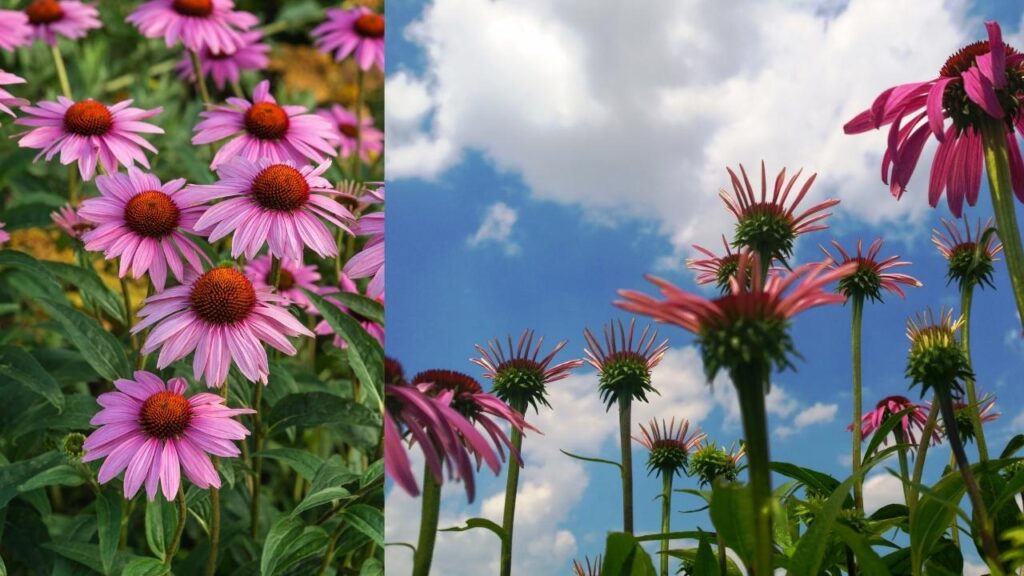
3. Black-Eyed Susan (Rudbeckia hirta)
Golden Beauty
These bright yellow flowers are a staple in native gardens. They provide nectar for bees and butterflies and seeds for birds, making them a multifunctional addition.
Growing Tips:
- Sunlight: Full sun
- Soil: Well-drained
- Water: Moderate
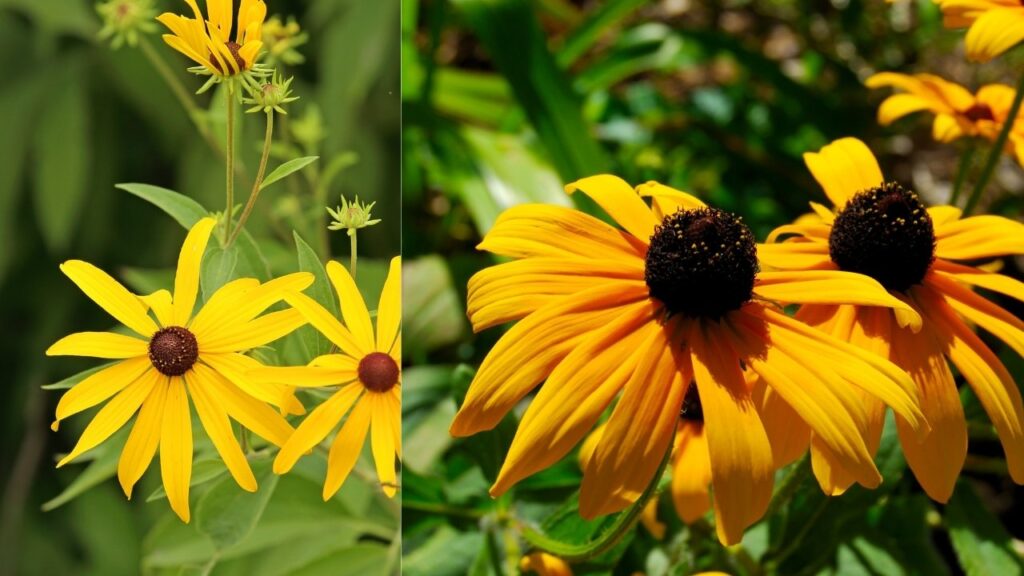
4. Bee Balm (Monarda fistulosa)
Hummingbird’s Delight
Bee balm’s tubular flowers are perfect for hummingbirds and long-tongued bees. The plant also has a lovely fragrance and can be used in teas.
Growing Tips:
- Sunlight: Full sun to partial shade
- Soil: Moist but well-drained
- Water: Keep soil consistently moist
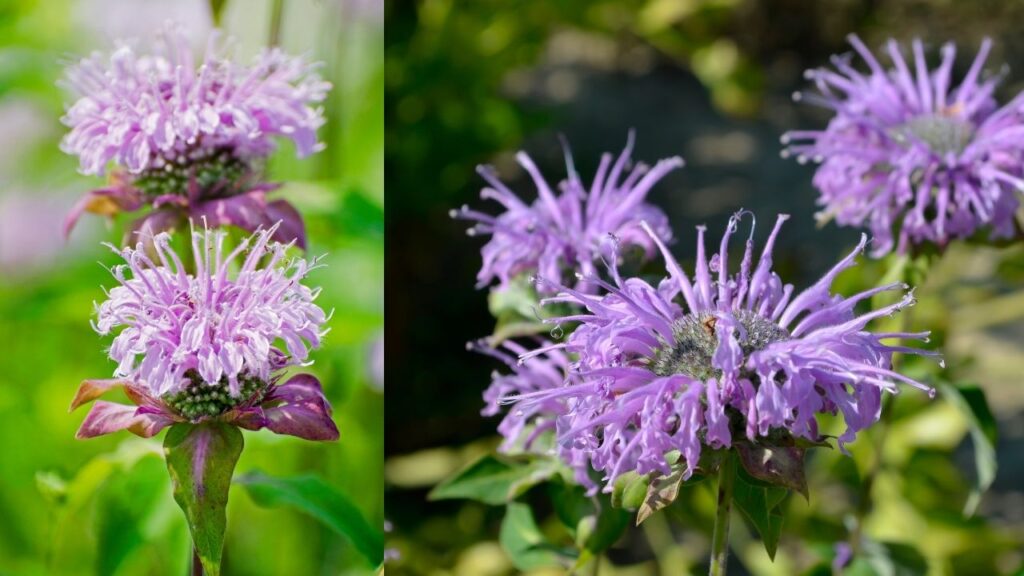
5. Goldenrod (Solidago spp.)
Not the Allergy Culprit
Contrary to popular belief, goldenrod doesn’t cause hay fever—that’s ragweed’s doing. Goldenrod is a vital late-season nectar source for bees and butterflies.
Growing Tips:
- Sunlight: Full sun
- Soil: Well-drained
- Water: Drought-tolerant

6. Blazing Star (Liatris spicata)
Vertical Vibrance
With tall spikes of purple flowers, blazing star adds height and attracts various pollinators, including butterflies and bees.
Growing Tips:
- Sunlight: Full sun
- Soil: Moist, fertile
- Water: Moderate

7. Joe-Pye Weed (Eutrochium purpureum)
Butterfly Magnet
This tall perennial produces clusters of pinkish-purple flowers that are irresistible to butterflies.
Growing Tips:
- Sunlight: Full sun to partial shade
- Soil: Moist
- Water: Keep soil consistently moist
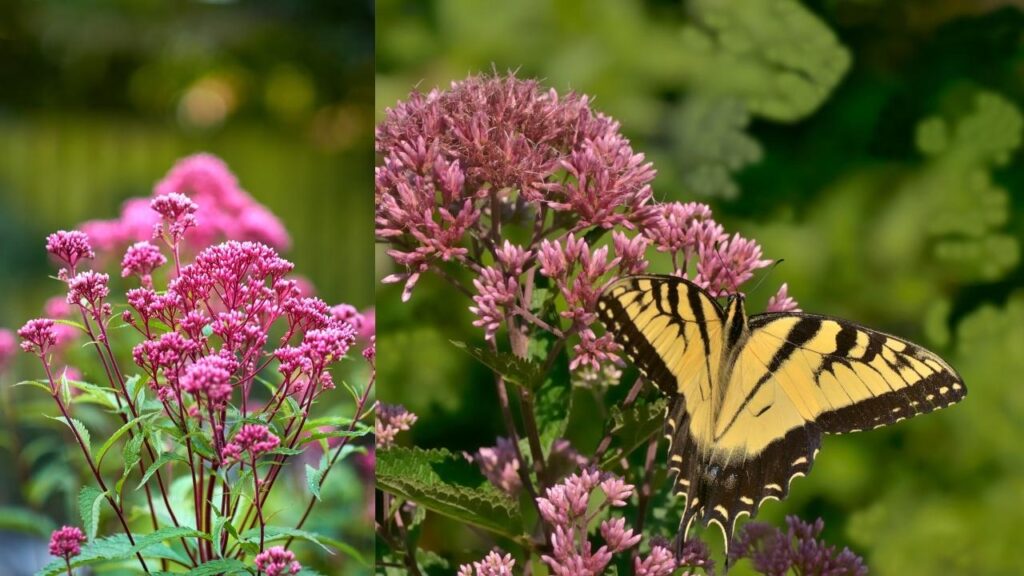
8. Aster (Symphyotrichum spp.)
Fall’s Floral Finale
Asters bloom from late summer to fall, providing critical nectar when other flowers have faded. They attract bees, butterflies, and moths.
Growing Tips:
- Sunlight: Full sun
- Soil: Well-drained
- Water: Moderate
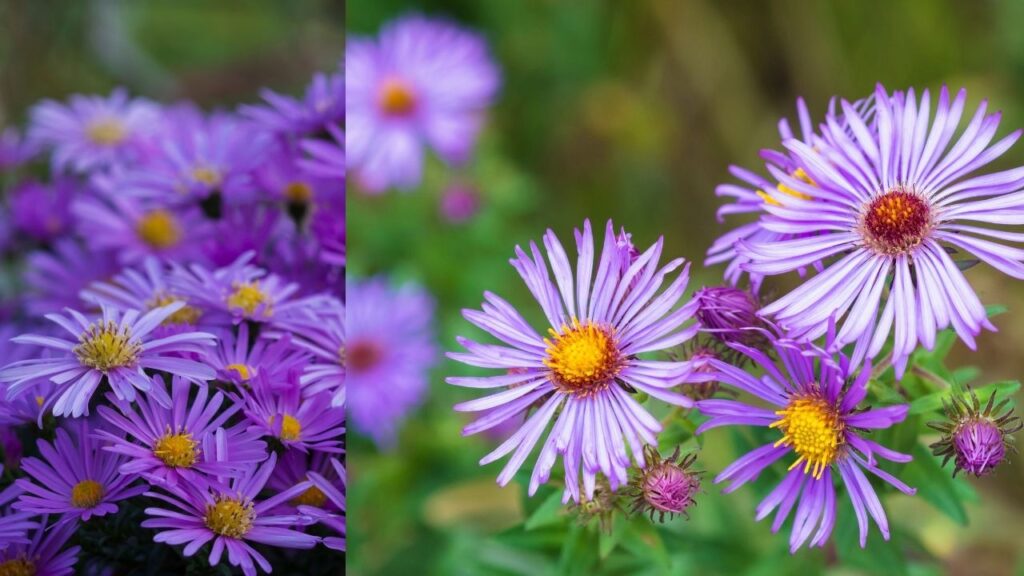
9. Wild Lupine (Lupinus perennis)
Early Bloomer
Wild lupine offers early-season nectar for pollinators and is the host plant for the endangered Karner blue butterfly.
Growing Tips:
- Sunlight: Full sun
- Soil: Sandy, well-drained
- Water: Drought-tolerant
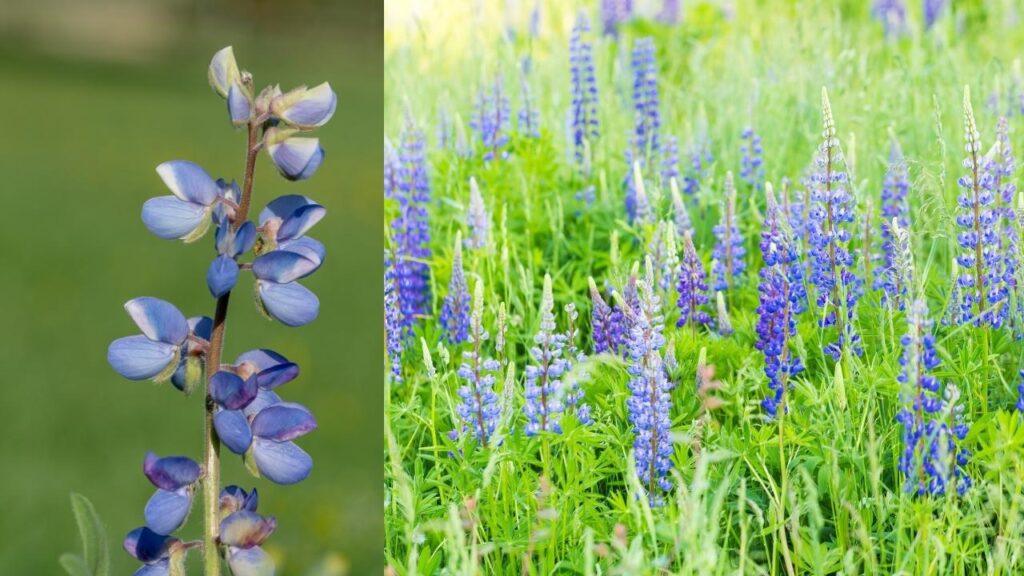
10. Cardinal Flower (Lobelia cardinalis)
Red Alert for Hummingbirds
With striking red flowers, the cardinal flower is a hummingbird favorite. It prefers moist conditions, making it ideal for rain gardens.
Growing Tips:
- Sunlight: Full sun to partial shade
- Soil: Wet to moist
- Water: Keep soil saturated
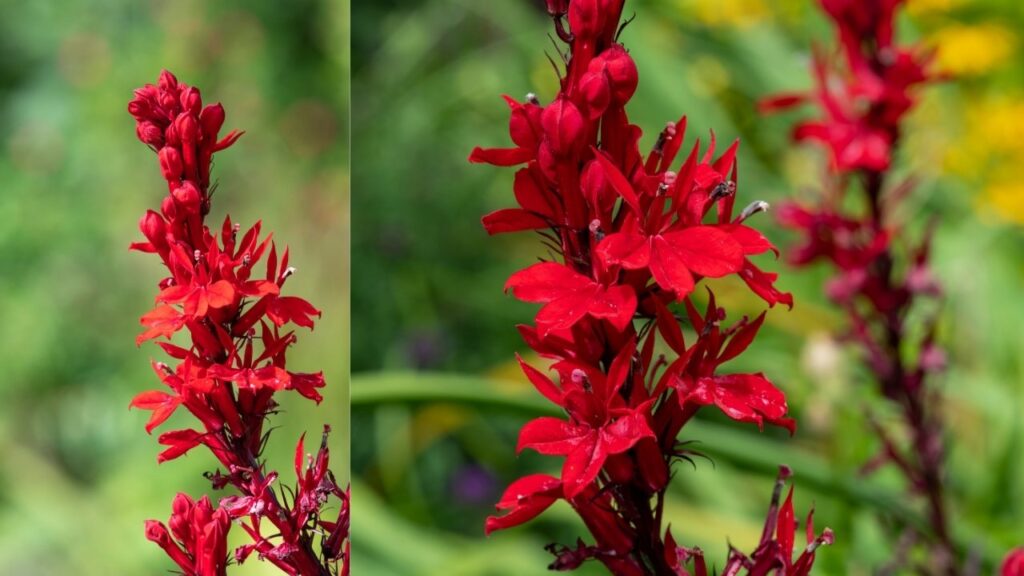
11. Virginia Bluebells (Mertensia virginica)
Spring’s Gentle Arrival
These bell-shaped flowers provide early nectar for bees. They thrive in woodland gardens and add a touch of blue in spring.
Growing Tips:
- Sunlight: Partial to full shade
- Soil: Rich, moist
- Water: Moderate
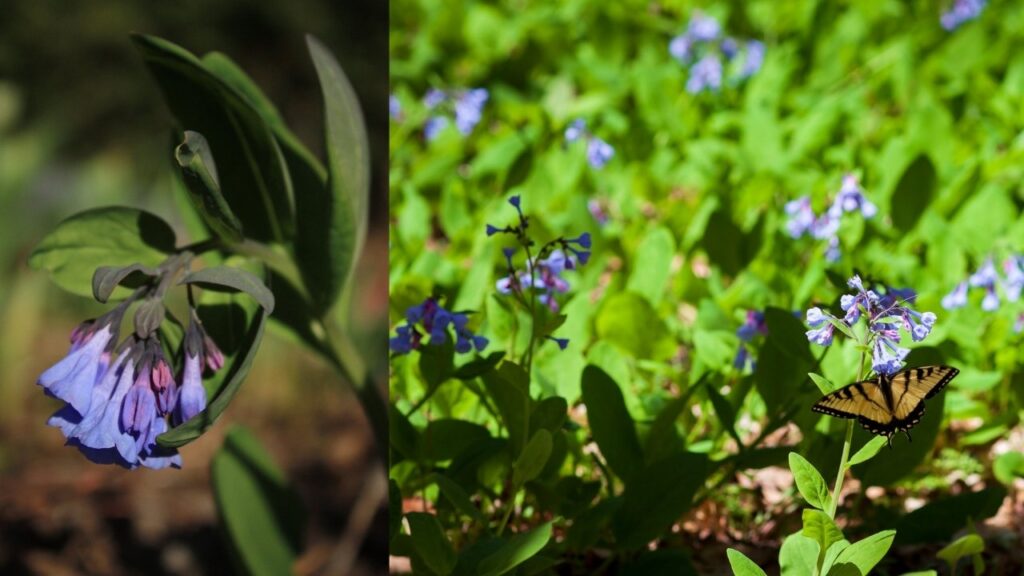
12. Wild Bergamot (Monarda fistulosa)
Fragrant and Functional
Similar to bee balm, wild bergamot attracts bees, butterflies, and hummingbirds. Its fragrant leaves can be used in teas.
Growing Tips:
- Sunlight: Full sun
- Soil: Dry to medium moisture
- Water: Drought-tolerant
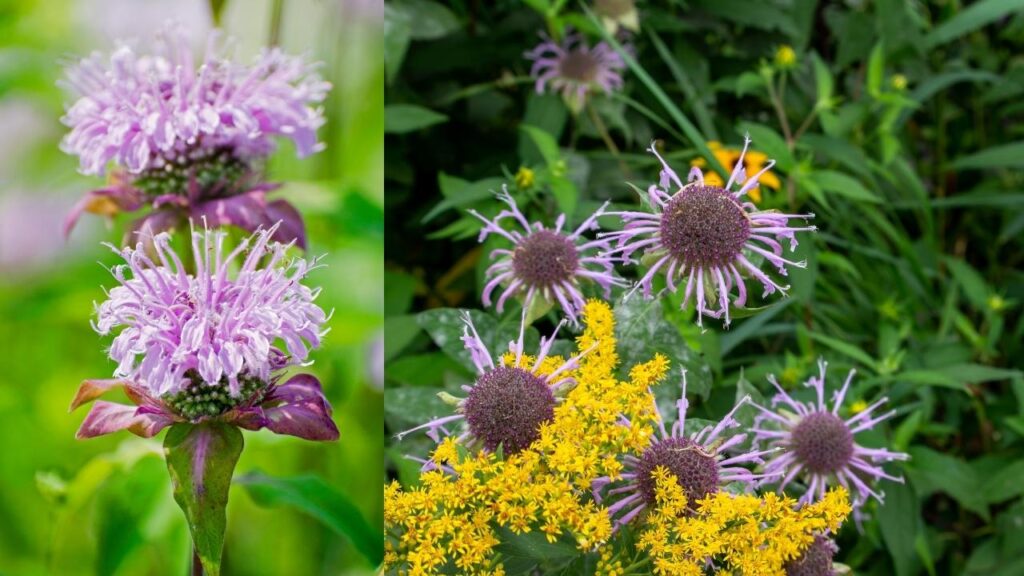
13. New England Aster (Symphyotrichum novae-angliae)
Late-Season Feast
This aster variety offers vibrant purple flowers that bloom late into the fall, providing nectar when it’s scarce.
Growing Tips:
- Sunlight: Full sun
- Soil: Moist, rich
- Water: Moderate
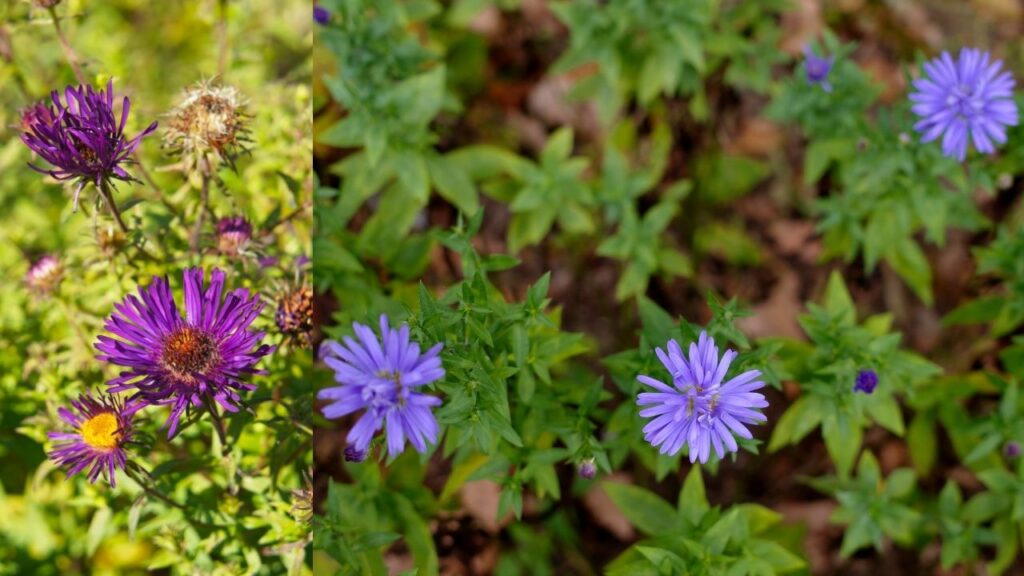
14. Butterfly Weed (Asclepias tuberosa)
Bright and Beneficial
With vibrant orange flowers, butterfly weed is another milkweed variety that supports monarchs and other pollinators.
Growing Tips:
- Sunlight: Full sun
- Soil: Well-drained, sandy
- Water: Drought-tolerant
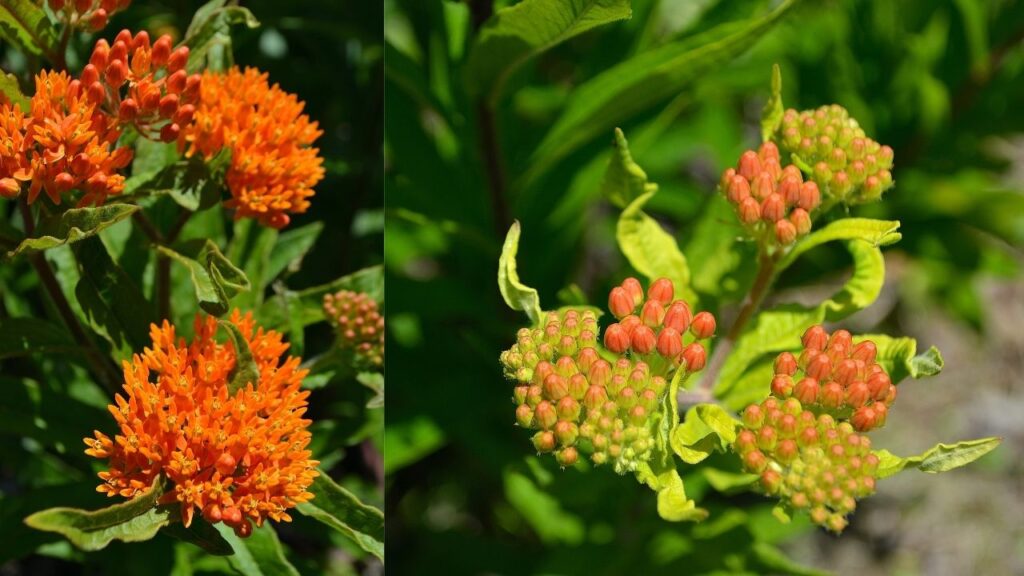
15. Purple Prairie Clover (Dalea purpurea)
Unique and Useful
This plant features unusual purple flower heads and is excellent for attracting bees and butterflies.
Growing Tips:
- Sunlight: Full sun
- Soil: Well-drained
- Water: Drought-tolerant
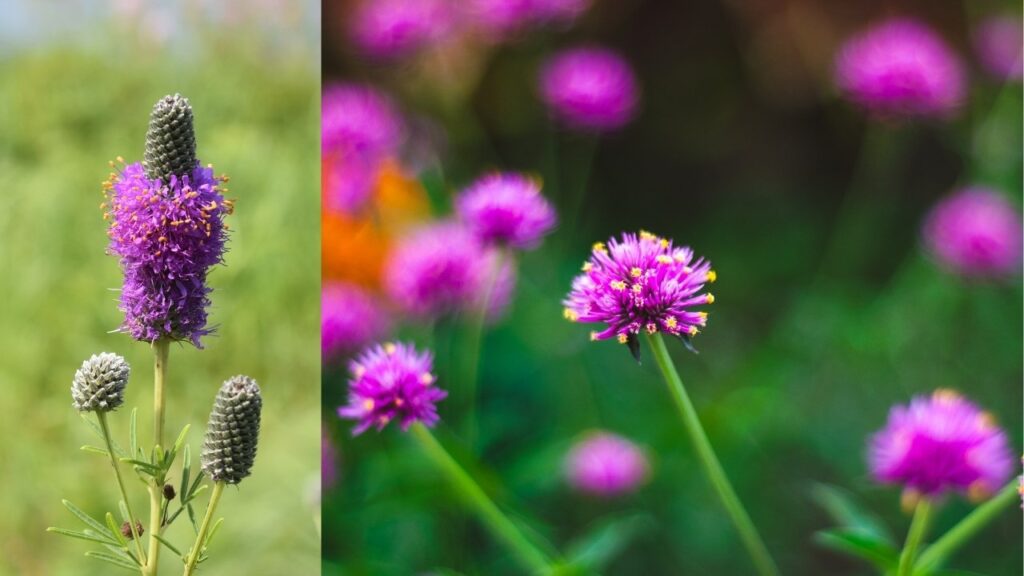
Why Native Plants Matter
Choosing native plants is more than just a gardening choice—it’s a crucial step toward restoring local ecosystems. Native plants are adapted to local soil and climate conditions, making them easier to grow and maintain. They also provide the specific nectar, pollen, and habitat that local pollinators need.
Recent Breakthroughs and Future Trends
In recent years, there’s been a growing movement toward creating pollinator-friendly landscapes. Studies have shown that even small urban gardens can significantly impact pollinator populations. Apps and online platforms now help gardeners select native plants tailored to their specific region, making it easier than ever to get involved.
Looking ahead, expect to see more community initiatives promoting native gardening. There’s also a push toward “rewilding” urban spaces, turning unused areas into mini-habitats for pollinators.
Tips for Getting Started
- Start Small: A vast space isn’t necessary. Even a few containers on a balcony can make a difference.
- Diverse Planting: Aim for a variety of plants that bloom at different times to provide continuous nectar sources.
- Avoid Pesticides: Chemicals can harm pollinators. Opt for natural pest control methods.
- Provide Water: A shallow dish with stones can serve as a water source for bees and butterflies.
Conclusion
Incorporating these 15 native plants into your garden not only enhances its beauty but also plays a vital role in supporting pollinator populations. Remember, every garden, no matter the size, can contribute to a healthier ecosystem.
So, let’s get our hands dirty and make our gardens a haven for pollinators. The buzz is truly worth it!
Happy gardening! If you have any questions or want to share your pollinator garden experiences, feel free to leave a comment below.
